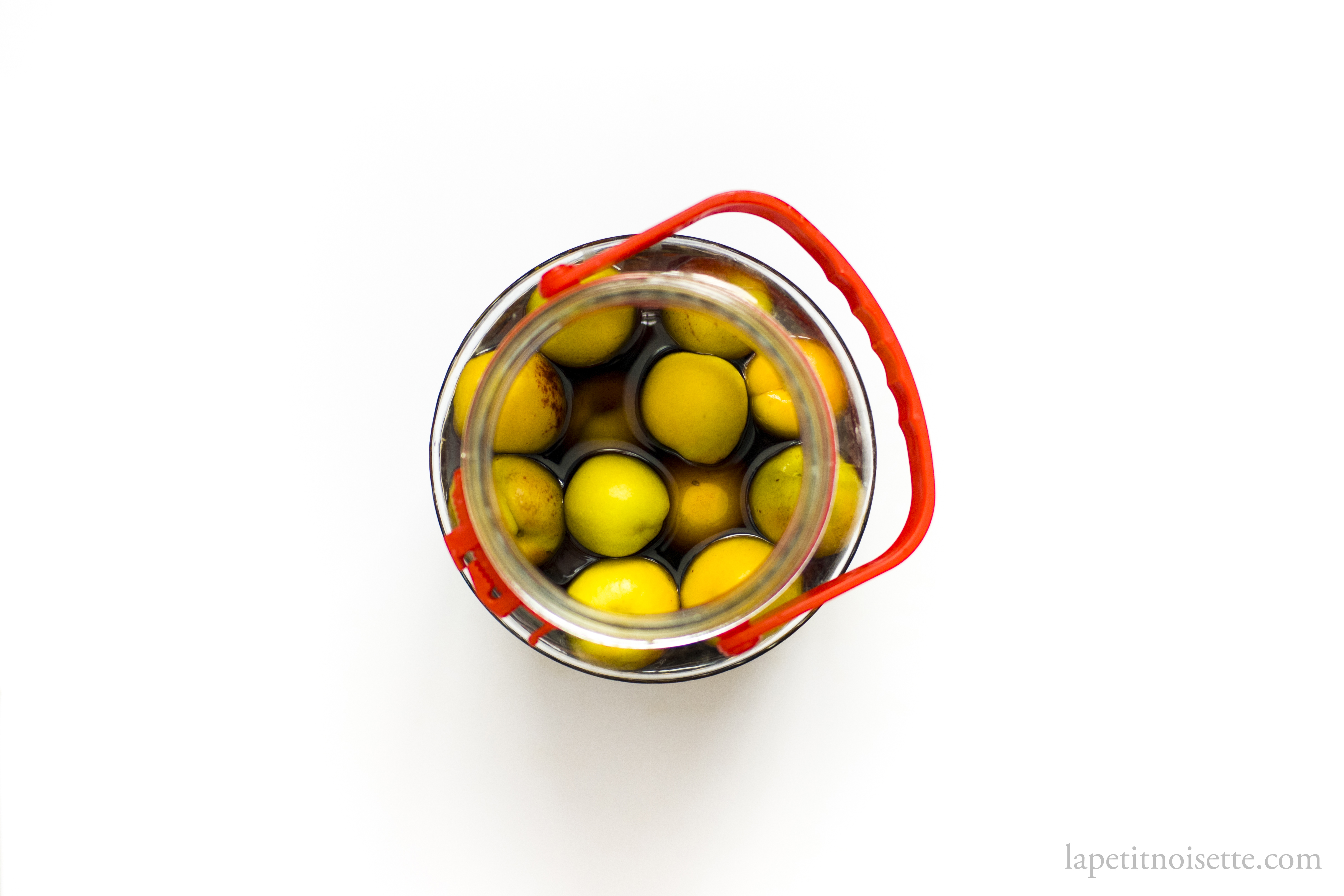
This site already features the standard traditional recipes using Japanese plums such as umeboshi and umeshu as well as some other less conventional ones used as ume sour and rose umeboshi. However, everytimes ume season comes about I can’t help but try out another ume recipe, and this time, that’s going to be ume mirin, a drink made by steeping ume in hon-mirin (本みりん), which is practically the way umeshu is made. You can make this liquor either using Japanese ume, or unripe green apricots, which is explained here.
The most famous producer of ume mirin in Japan is most likely Hakusen Shuzo (白扇酒造) a brewery in Gifu prefecture that produces high quality mirin. In fact, the restaurant I worked at used their 3 year aged mirin (Fukuraijun/福来純) in our recipes. You can find the recipe for our ponzu sauce here. As one of the most famous producers of mirin in Japan, their Fukuraijun mirin has a rich golden colour and a gently sweet mouthfeel.
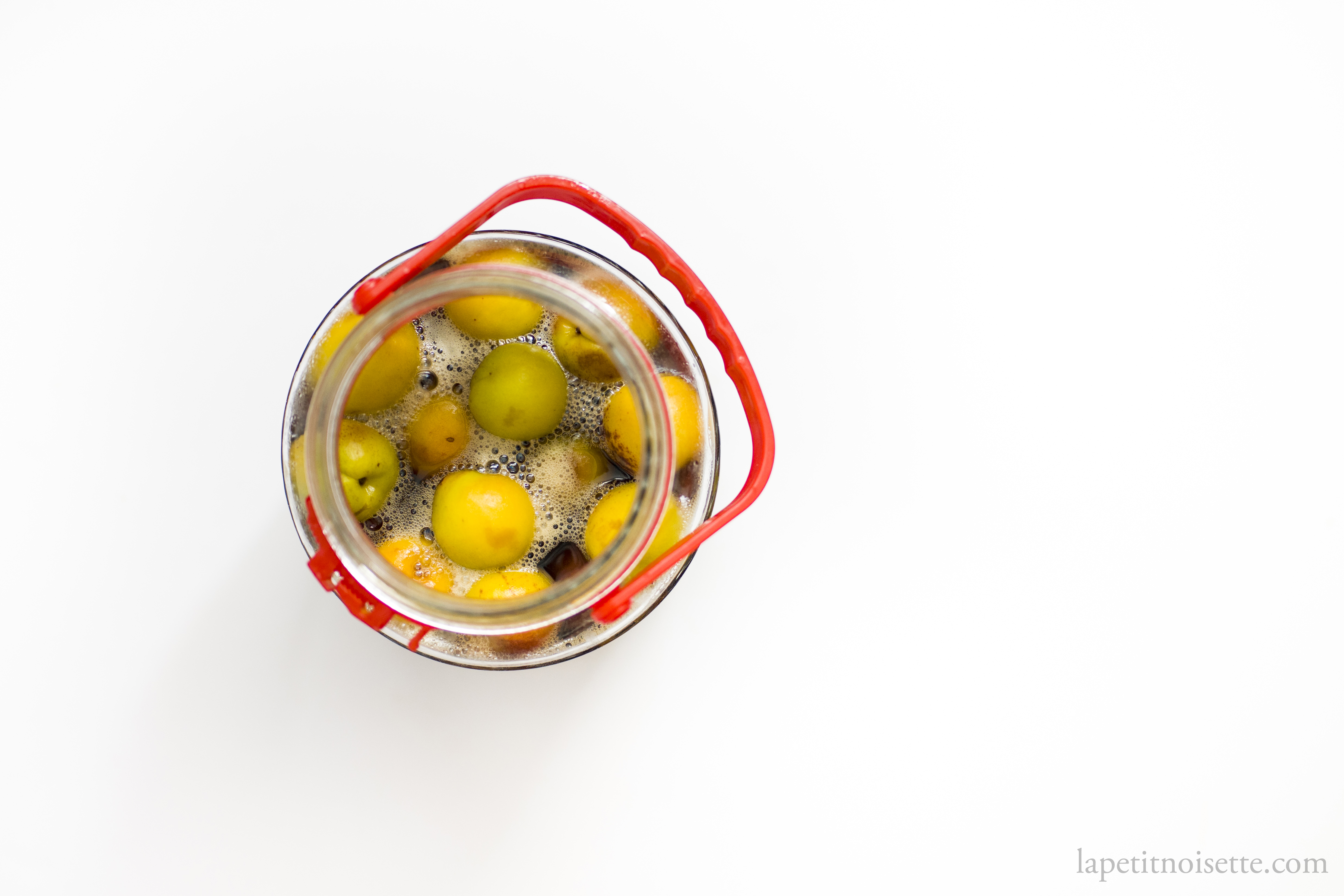
The key factor here is that they are simply adding alcohol to fructose syrup, but are fermenting their mirin of scratch using a mixture of short grain glutinous rice (もち米), rice koji (麹) and distilled rice liquor (適米). Mirin made this way is known as hon-mirin or true mirin, and yields a product that is slightly sweet, with an alcohol percentage around 14%. Nowadays, true mirin is mainly used as a cooking ingredient at high end restaurants and rarely drunk as it, but I have heard people mention that it used to be something that was drunk in the past. Even as a cooking ingredient, it has a high alcohol percentage and some alcoholic beverages and thus is subject to liquor tax in most countries, making it much more expensive to buy outside Japan compared to normal mirin.
If you look at all the other types of mirin on the market, the majority of them have little to no alcohol in them and those with some alcohol in them typically have salt added to them to give them exemptions from liquor tax. We’re not going into the other different kinds of mirin here in detail as many other people have already explained what they are on the internet. There are many other producers of hon-mirin on the market, and you can pick any one of them to make this recipe. Just look out for the words hon-mirin (本みりん) when buying it for this recipe, and check that it has at least 12% alcohol and no added salt to it. In the picture above, you can see the ume mirin fermenting just after 1 day from the bubbling. The fermentation stopped after about a week.
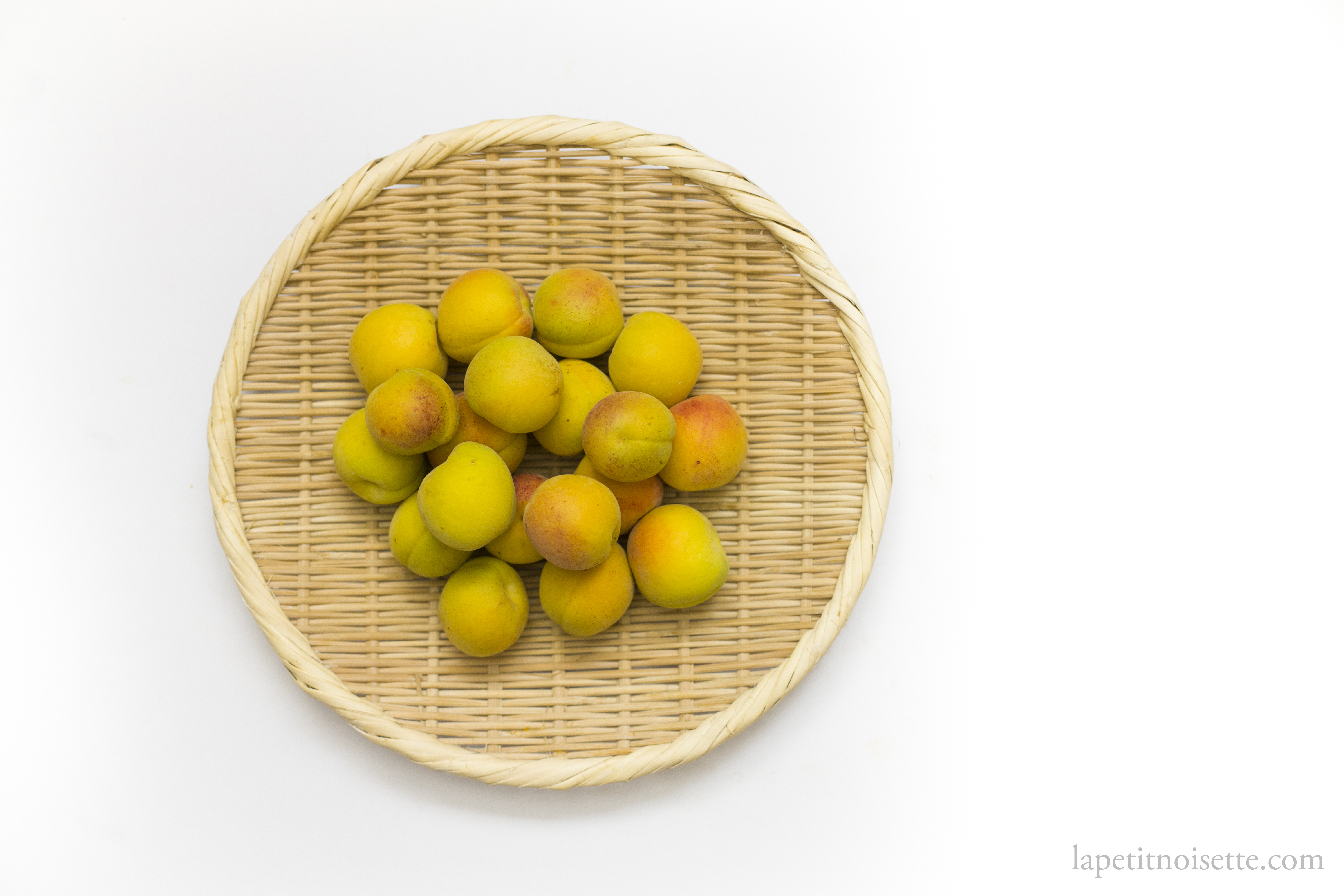
Other than the fact that using mirin with added salt will yield a disgusting drink. There’s actually another cool story behind this recipe, which is that making ume mirin is actually illegal. Japan’s liquor tax law prohibits the fermentation of alcohol at home without a license and this used to include umeshu until it was amended in 1962 to add umeshu as an exemption provided it was made from liquor that was at least 20% alcohol to begin with. The reasoning behind this was that above 20%, yeast would not be able to survive and thus there won’t be any alcohol produced, so the umeshu would be more of an infused liquor rather than fermenting your own alcohol. If you were to use 14% mirin however, there was a possibility that the yeast would ferment the sugars from the ume juice and create alcohol, thus making it illegal.
There was a story going around a few years ago of the NHK actually publicly apologizing for broadcasting a recipe for ume mirin on national TV, which was teaching people how to make something illegal. Whenever someone asks me when yeast dies, for some reason off the top of my head I’d always assume it was 12% but upon further investigation, some strands of yeast are able to survive up to 18%. That means when you make this recipe, there is a chance that the alcoholic fermentation will occur and increase the percentage alcohol in the wine but sometimes it doesn’t happen. In the tests I’ve done, it tends to happen when the weather is warmer and if you only wash the ume lightly. It isn’t an intrinsic problem itself if there is a little fermentation, just be careful of the lid of your jar exploding off the top. Whilst it’s strictly speaking illegal, there’s honestly nothing to worry about as there are many beer homebrewers at home who don’t get in trouble, so long as you don’t intend to sell your product. And anyway, you can do what most Japanese people online do, which is to say it’s a recipe for mirin pickled ume 😉 If you try making this recipe with mirin other than hon-mirin, then you might actually start making Japanese ume wine given the amount of added sugar and lack of alcohol in them.
The steps for this recipe are pretty much the same as umeshu where you disinfect the jar with alcohol, clean the plums and just pour everything together. You also want to remove the plums after leaving them in the mirin for 3 months as you don’t want any bitterness from the seeds to leech into the drink. Mirin is already naturally sweet so we don’t add any rock sugar to it. After around 3 months of maceration, the ume mirin is ready to be drunk with ice or used as flavouring in desserts just as you would amaretto.
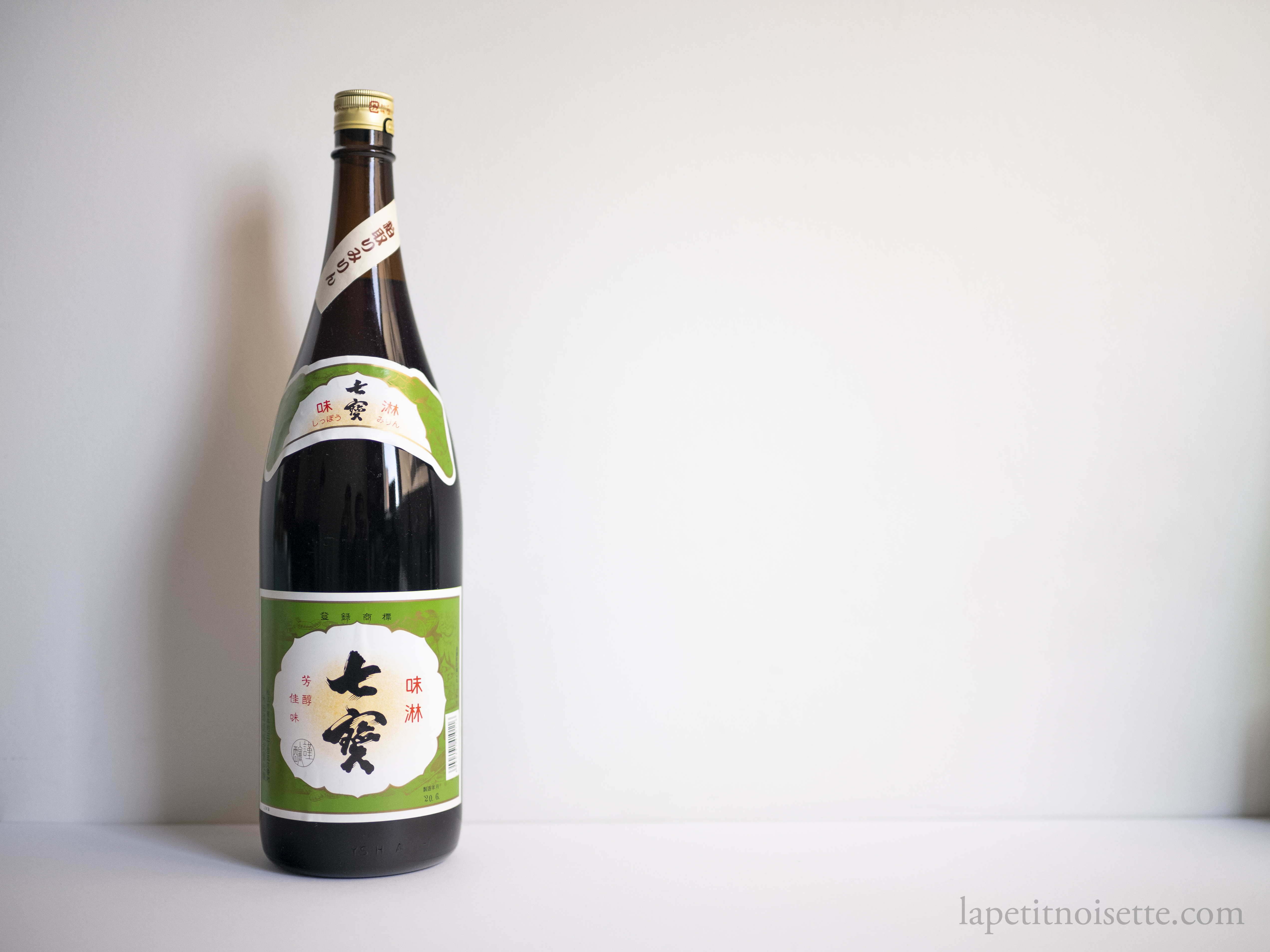
Yoneda Sake Brewery’s Mirin (米田酒造株式会社の本みりん)
We’ve previously raved about Yoneda’s cooking sake in our recipe for simmered kinmedai head, so we decided to use their hon-mirin for this recipe. They make two kinds of hon-mirin, your standard one using a mixture of short grain glutinous rice (もち米), rice koji (麹) and distilled rice liquor (適米) and a special one that incorporates sake lees into recipe known as hon-mirin shippo (本みりん 七宝 (酒粕取焼酎仕込) which we used as it has a richer taste. Feel free to use any hon-mirin you can find for this recipe.
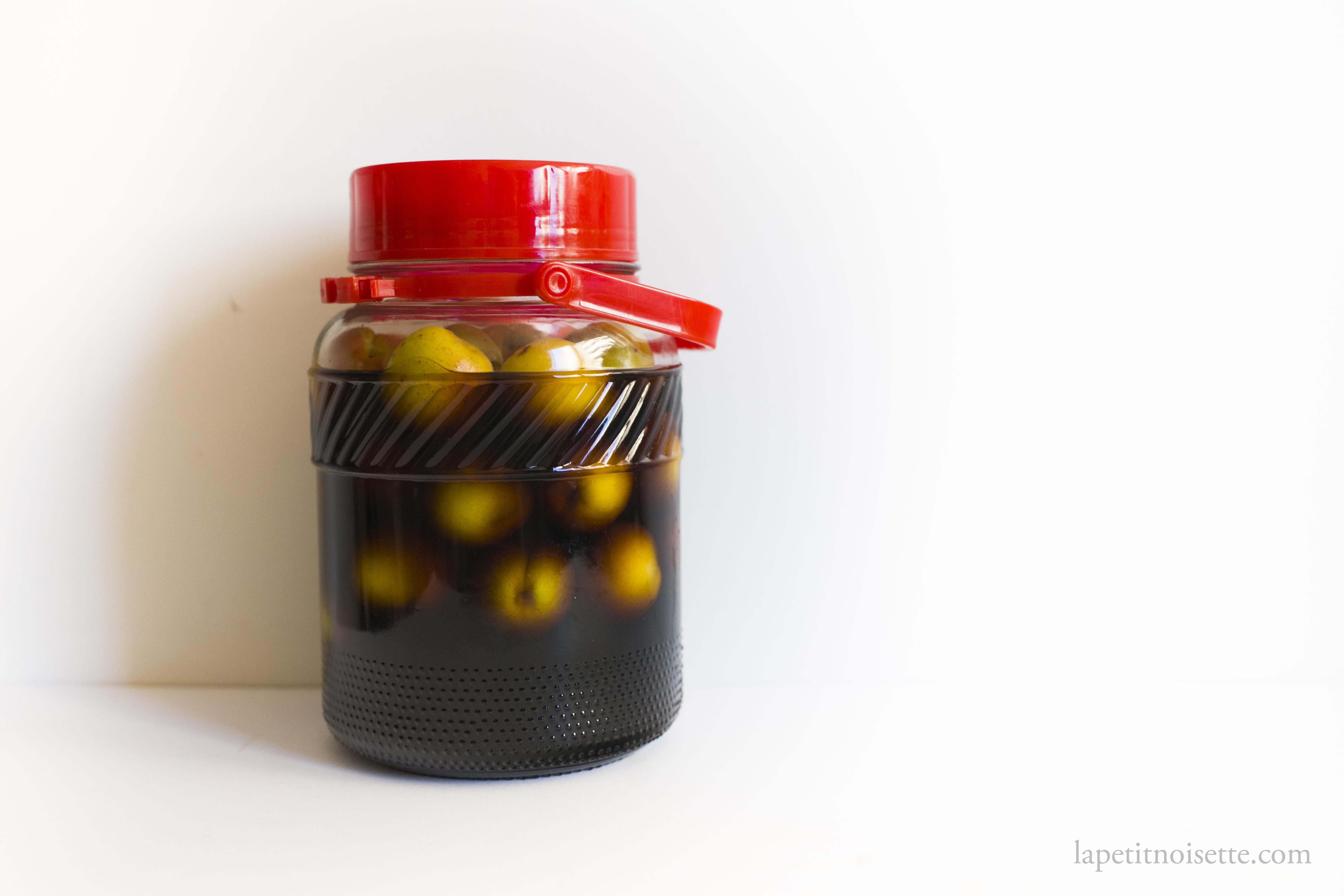
Ume Mirin Recipe 梅みりんの作り方
For a standard 3 litre umeshu jar with a red lid
1kg of ume or green unripe apricots
1.8 litres of hon-mirin
- Check the quality of each individual fruit, remove any fruits that are bruised or starting to rot as they risk ruining your entire batch of wine.
- Carefully use the tip of a paring knife or a toothpick to remove the ends of the stems on the tip of the fruit. This should be easy to do.
- Wash the ume in cold water to remove any dirt on them. Be careful not to bruise them while washing.
- Pour about a tablespoon of mirin or neutral spirit into the jar and use a clean cloth to wipe down the inside of the jar. This step sanitises the jar.
- Gently place all the ume into the jar. Don’t drop them in as they’ll bruise.
- Pour in all the mirin and close the lid.
- Leave in a cool, shady spot for at least 3 months before drinking.
- After 5 months, strain out ume which can be used to make jam.
- The ume mirin is ready to drink after 3 months but best after 5.
Notes:
Some umeshu recipes say to soak the fruits overnight to remove some of the astringency in the fruit but the fruit also absorbs water over time which will dilute the final taste of your product so a quick wash will do.
3 months is the minimum age before you can start to drink your ume mirin. During this time, you should notice your fruit float to the top when you first add the alcohol before slowly starting to sink to the bottom of the jar. At 3 months, I recommend tasting your ume mirin to see if it’s still to your taste. If the alcohol still tastes rather harsh, leave it for a few more months to mellow out.
Sunlight causes the wine quality to degrade faster which is why you should store your ume mirin in a cold shady place. Otherwise, wrap the jar with newspaper.